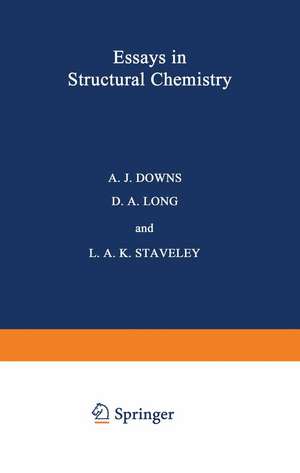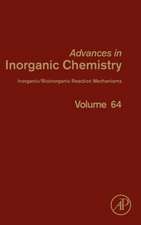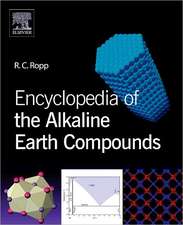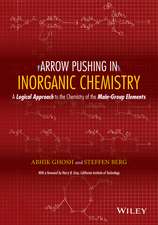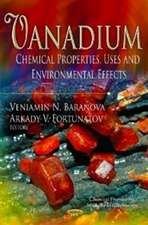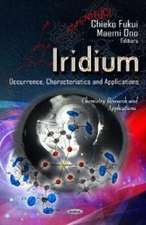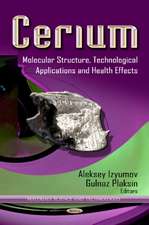Essays in Structural Chemistry
Editat de A. J. Downsen Limba Engleză Paperback – 17 mar 2012
Preț: 400.26 lei
Nou
Puncte Express: 600
Preț estimativ în valută:
76.60€ • 79.87$ • 63.66£
76.60€ • 79.87$ • 63.66£
Carte tipărită la comandă
Livrare economică 20 martie-03 aprilie
Preluare comenzi: 021 569.72.76
Specificații
ISBN-13: 9781468419047
ISBN-10: 1468419048
Pagini: 508
Ilustrații: XXIV, 480 p.
Dimensiuni: 155 x 235 x 27 mm
Greutate: 0.7 kg
Ediția:1971
Editura: Springer Us
Colecția Springer
Locul publicării:New York, NY, United States
ISBN-10: 1468419048
Pagini: 508
Ilustrații: XXIV, 480 p.
Dimensiuni: 155 x 235 x 27 mm
Greutate: 0.7 kg
Ediția:1971
Editura: Springer Us
Colecția Springer
Locul publicării:New York, NY, United States
Public țintă
ResearchCuprins
1 Molecular force fields and valency.- A. Introduction.- B. Determination of force constants.- C. The valence force field.- D. Examples of the use of force constants.- 2 The hyper Raman effect.- A. Introduction.- B. The origin of the hyper Raman effect.- C. Classical treatment.- D. Density matrix treatment.- E. Selection rules, symmetry and activity.- F. Experimental Appendix.- 3 Vibrational assignments in small molecules.- A. Introduction.- B. General principles.- C. Linear molecules.- D. Prolate symmetric tops.- E. Oblate symmetric tops.- F. Spherical tops.- G. Asymmetric tops.- H. Force fields and vibrational assignments.- I. Conclusions.- 4 Interferometry: Experimental techniques and applications to inorganic structures.- A. Introduction.- B. Interferometric methods in the far-infrared region.- C. Some practical examples.- 5 Single-crystal and high-temperature gas-phase Raman spectroscopy.- A. Introduction.- B. High-temperature gas-phase Raman spectroscopy.- C. Single-crystal Raman spectroscopy.- 6 High-resolution Raman spectroscopy of gases.- A. Introduction.- B. Historical development.- C. Experimental arrangement and advent of laser sources.- D. The determination of structural parameters.- E. Theory and examples of rotational Raman spectra.- F. Future perspectives.- 7 Intermolecular force effects in the Raman spectra of gases.- A. Introduction.- B. The effect of pressure on line and band shapes.- C. Frequency shifts due to isotropic intermolecular forces.- 8 Raman spectra of alkali halides.- A. Introduction.- B. Historical background.- C. Experimental technique.- D. Theoretical considerations.- E. Raman spectra—Theoretical considerations.- F. Experimental results.- G. Mixed crystals and crystals doped with impurities or defects.- H. Future trends.- 9 Atomicinteractions in molecular, covalent, ionic and metallic crystals.- A. Introduction.- B. Molecular crystals.- C. Govalent and ionic crystals.- D. Types of atomic aggregate and the Periodic Table.- E. Basic nature of metallic crystals.- F. Atomic aggregates with closed d-shells.- G. Crystal structure and cohesive energy of transition metals.- H. Contribution of d-electrons to the atomic aggregation of transition elements.- I. Crystal structure and cohesive energy of lanthanides.- J. The nature of 3d-electrons and the transformation of Fe.- K. Conclusion.- 10 Structural aspects of the Mössbauer effect.- A. Introduction.- B. Method.- C. Applications in chemistry.- D. Conclusions.- 11 Non-stoichiometry in fluorite structures.- A. Introduction.- B. Anion-excess phases.- C. Anion deficient phases.- 12 Some aspects of solvation.- A. Introduction.- B. Thermodynamic aspects of salvation.- C. Transport coefficients and solvation.- D. Nuclear magnetic resonance spectroscopy and solvation.- E. Conclusions.- 13 Vibrational spectroscopic studies of complexes in solution.- A. Introduction.- B. Quantitative equilibrium studies.- C. Structural aspects; solvent effects and solution interactions.- D. Structural aspects; individual complexes.- 14 Vibrational studies of the Jahn-Teller effect.- A. Introduction.- B. Vibrational properties of electronically degenerate molecules.- C. Experimental results: strong Jahn-Teller effects.- D. Experimental results: weak Jahn-Teller effects.- E. Conclusion.- 15 Spectroscopic properties of the diatomic oxides of the transition elements.- A. Introduction.- B. Methods of study.- C. Properties of the ground states.- D. Electronic transitions.- E. Hyperfine structure.- F. Conclusions.- 16 Vibrational studies of metal-metal bonding.- A. Introduction.- B.Characteristics of metal-metal vibrations.- C. Interpreted spectra.- D. Force constants and other bond parameters.- 17 Infrared and Raman spectra of organometallic and related compounds.- A. Introduction.- B. Linear dimethylmetal compounds.- C. Methyl-platinum(IV) compounds.- D. Trisilyl compounds of Group V elements.- E. Trigermyl compounds of Group Velements.- 18 Structural aspects of sulphur-fluorine chemistry.- A. Introduction.- B. Hexavalent sulphur fluorides.- C. Tetravalent sulphur fluorides.- D. Divalent sulphur fluorides.
